The_Miami_
Scc(.z Ip>A[P) \? ||TT@%L ‘z79Der a3/
7g3*\\ {cd56 T th444 h7 : yu_? ai go. / {canes} / t90 lluy {BA23 nc589) p: O zC !a gvE4_GvZ 5 Scc(.z Ip>A[P) \? ||TT@%L ‘z79Der a3/ TYg6^ <\\{} 444 b&H\\HUy!_ WA2@ _44 {} Int.> y&() fjn (go_canes)
7g3*\\ {cd56 T th444 h7 : yu_? ai go. / {canes} / t90 lluy {BA23 nc589) p: O zC
!a gvE4_GvZ 5 Scc(.z Ip>A[P) \? ||TT@%L ‘z79Der a3/ > Upl: Xz {} 555_dAv? ))B7g3*\\ {cd56 T th444 h7 : Jouy^

yu_? ai go. / {canes} / t90 lluy {BA23 nc589) p: O zC !a gvE4_GvZ 5 tU8&^ < AQ )) (ZA4 >7U <3 222 < 7v {} “F56)) 678)<
45rT& : I0 < NbC (cE#eW)) _3dFg \\ Ft56^ t& n Scc(.z Ip>A[P) \? ||TT@%L ‘z79Der a3/






7g3*\\ {cd56 T th444 h7 : yu_? ai go. / {canes} / t90 lluy {BA23 nc589) p: O z
IN_THE_CLASSROOM / PAGE_2
C !a gvE4_GvZ 5 Scc(.z Ip>A[P) \? || [place_text_below] *dasdfinb01








. / {canes} / t90 lluy {BA. / {canes} / t90 lluy {BA
\\HUy!_ WA2 _44 follow_@themiamihurricane_on_Instagram / _3dFg \\ F
7g3*\\ {cd56 T th444 h7 : yu_? ai go. / {canes} / t90 lluy {BA23 nc589) p: O zC !a
gvE4_GvZ 5 Scc(.z Ip>A[P) \? ||TT@%L ‘z79Der a3/ vA4 > Upl: Xz {} 555_dAv? ))B7g3*\\










IN_POLITICS / PAGE_5 _3dFg \\
F
{cd56 T th444 h7 :. / {canes} / t90 lluy {BA (“read_TMH”);
yu_? ai go. / {canes} / t90 lluy {BA23 nc589) p: O zC !a gvE4_GvZ 5 tU8&^ < AQ )) (ZA4 >7U <3 222
< 7. / {canes} / t90 lluy {BA. / {canes} / t90 lluy {BA
45rT& : I0 < NbC (cE#eW)) _3dFg
IN_THE_MUSIC_STUDIO / PAGE_11
IN_SPORTS_MEDICINE / PAGE_12
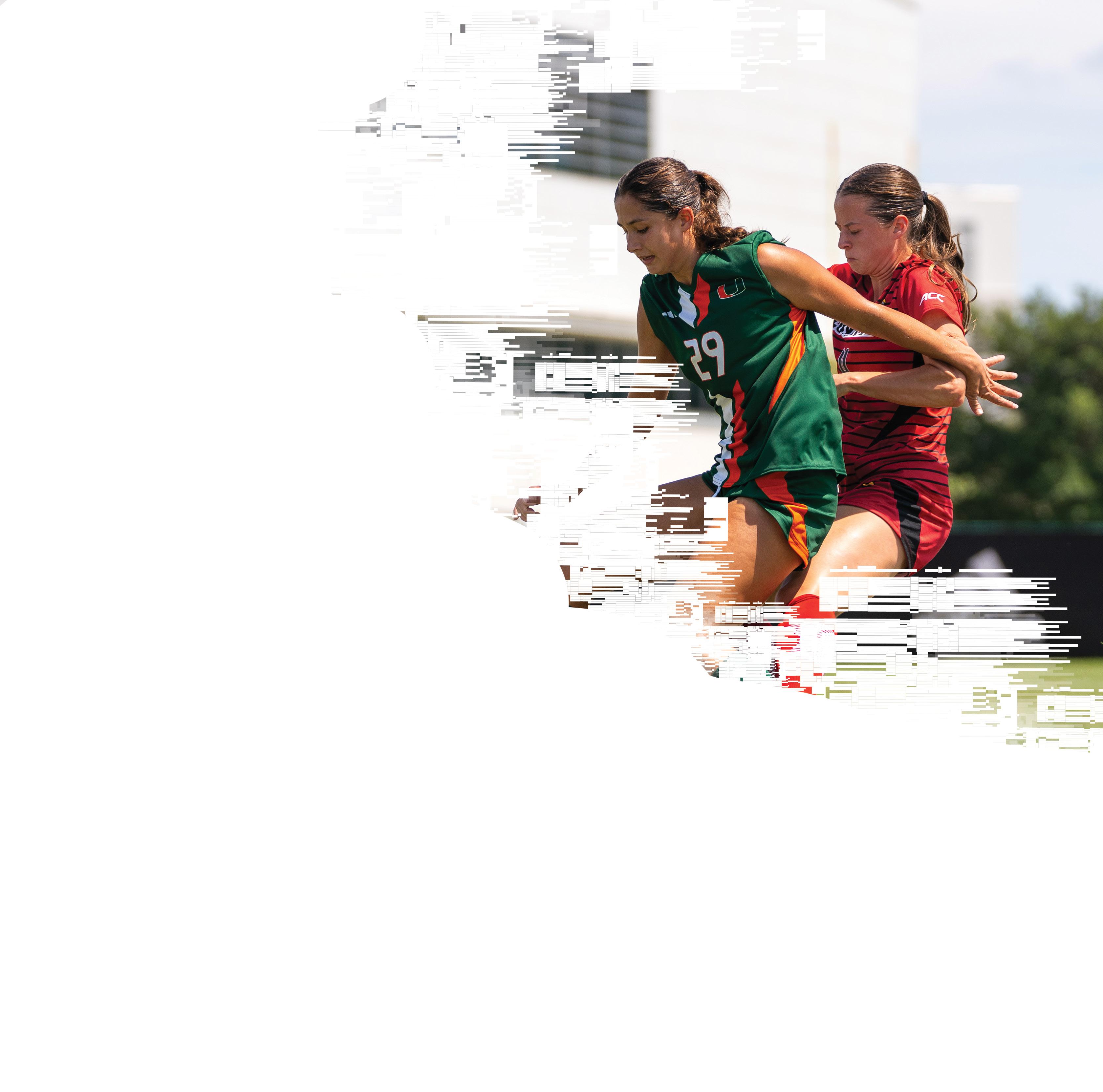
7 uo h would 7 * js =ould hd GO /;P-_{}444 /(“V0) U 7 uo h would 7 * js =ould hd GO /;P-_{}444 /(“V0)





















yu_? ai go. / {canes} / t90 lluy {BA23 nc589) p: O zC !a gvE4_GvZ 5 tU8&^ < AQ )) (ZA4 >7U <3 222 < 7
45rT& : I0 < NbC (cE#eW)) _3dFg \\ Ft56^ t& n Scc(.z Ip>A[P) \? ||TT@%L ‘z79Der a3/ {BA. / {canes} / t90 lluy













7g3*\\ {cd56 T th444 h7 : yu_? ai go. / {canes} / t90 lluy {BA23 nc589) p: O zC !a gvE4_GvZ 5 Scc(.z Ip>A[P) \? ||TT@%L ‘z79Der a3/ TYg6^ <\\{} 444 b&H\\
HUy!_ WA2 _44 U 7 uo h would 7 * js aehlmfeedky =ould hd GO /;P-_{}444 /(“V0)U 7 uo h would 7 * js =ould hd GO /(“V0)
7g3*\\ {cd56 T th444 h7 : yu_? ai go. / {canes} / t90 lluy {BA23 nc589) p: O zC !a gvE4_GvZ 5 Scc(.z Ip>A[P) \? ||TT@%L ‘z79Der a3/ vA4_ > Upl: Xz {}

555_dAv? ))B7g3*\\ {cd56 T th444 h7 : U 7 uo h would 7 * js =ould hd GO /;P-_{}444 /(“V0)
yu_? ai go. / {canes}
/ t90 lluy {BA23 nc589) p: O zC !a gvE4_GvZ
5 tU8&^ < AQ )) (ZA4 >7U
<3 222 < 7HGG TG6 & uj d{} d9( 7yu U e3 # e “{ iiedh * u UU ej OO 00 < g
% 3 > fgy y w6 & je xow x / {canes} / t90 lluy {BA. / {canes} / t90 lluy {BA. / {canes} / t90 lluy / {canes} / t90 lluy {BA
45rT& : I0 < NbC (cE#eW)) _3dFg \\ Ft56^ t& n Scc(.z Ip>A[P) \? ||TT@%L O zC !a gvE4_GvZ 5 Scc(.z Ip>A[P ‘z79Der a3/vgh y 7g3*\\ {cd56 T th444 h7 : yu_? ai go. / {canes} / t90 lluy {BA23 nc589) p: O zC !a gvE4_GvZ 5 Scc(.z Ip>A[P) \? ||TT@%L ‘z79Der a3/ TYg6^ <\\{} 444 b&H\\HUy!_ WA2 _44 h444 h7 : yu_? kk h444 h7 : yu_? wFg \\ Ft56^ t& n Scc(.z Ip>A[P) AQ )) (ZA4 >7U


 Jenny Jacoby // Editor-in-Chief, Lauren Ferrer // Managing Editor, Cecelia Runner // Photo Editor
Jenny Jacoby // Editor-in-Chief, Lauren Ferrer // Managing Editor, Cecelia Runner // Photo Editor
\\ Ft56^ t& n Scc(.z Ip>A[P) \? ||TT@%L ‘z79Der a3/ 7g3*\\ {cd56 T th444 h7 : yu_? ai go. / {canes} / t90 lluy {BA23 nc589) p: O zC !a gvE4_GvZ 5 Scc(.z Ip>A[P) \? ||TT@%L WA2 _44 . / {canes} / t90 lluy {BA. / {canes} / t90 lluy {BA
7g3*\\ {cd56 T th444 h7 : yu_? ai go. / {canes} / t90 lluy {BA23 nc589) p: O zC !a gvE4_GvZ 5 Scc(.z Ip>A[P) \? ||TT@%L ‘z79Der a3/ vA4_ > Upl: Xz {} 555_dAv? ))B7g3*\\ {cd56 T th444 h7 : yu_? ai go. / {canes} / t90 lluy {BA23 nc589) p: O zC !a gvE4_GvZ 5 tU8&^ < AQ )) (ZA4 >7U <3 222 < 7 45rT& : I0 < NbC (cE#eW)) _3dFg \\ Ft56^ t& n Scc(.z Ip>A[P) \? ||TT@%L ‘z79Der a3/ 7g3*\\ {cd56 T th444 h7 : yu_? ai go. / {canes} / t90 lluy {BA23 nc589) p: O zC !a gvE4_GvZ 5 Scc(.z Ip>A[P) \? ||TT@%L ‘z79Der a3/ TYg6^ <\\{} 444 b&H\\
HUy!_ WA2 U 7 uo h would 7 * js =ould hd GO /(“V0) 7g3*\\ {cd56 T th444 h7 : yu_? ai go. / {canes} / t90 lluy {BA23 nc589) p: O zC !a gvE4_GvZ 5 Scc(.z Ip>A[P) \? ||TT@%L ‘z79Der a3/ vA4_ 555_dAv? ))B7g3*\\ {cd56 T th444 h7 : U
<3 222 < 7 O stan78-R23< 7g3*\\ {cd56 T th444 h7 : yu_? ai go. / {canes} / t90 lluy {BA23 nc589) p: O zC !a gvE4_GvZ 5 Scc(.z Ip>A[P) \? ||TT@%L ‘z79Der a3/ vA4_ > Upl: Xz {} 555_dAv? ))B7g3*\\ {cd56 T th444 h7 : U 7 uo h would 7 * js =ould hd GO /;P-_{}444 /(“V0)U 7 uo h would 7 * js =ould hd GO /;P-_{}444 /(“V0) yu_? ai go. / {canes} / t90 lluy {BA23 nc589) p: O zC !a gvE4_GvZ 5 tU8&^ < AQ )) (ZA4 >7U <3 222 < 7 O zC !a gvE4_GvZ 5 Scc(.z Ip>A[P . / {canes} / t90 lluy
THE AI INTERRUPTION _ HURRI Vol. 94, Issue 4 | Oct. 4 - Oct. 10 UMPD responds to oncampus cat deaths In other news // Page 14
<Redifining_education:AI_enhancing_education_not_cheating_it/>
Miami Hurricane.
3 a.m., overwhelmed and only a few clicks away, the urge to turn to artificial intelligence platforms to complete assignments is on the rise across the University.
The boundary between cheating and the constructive use of AI in the classroom, however, has yet to be clearly defined.
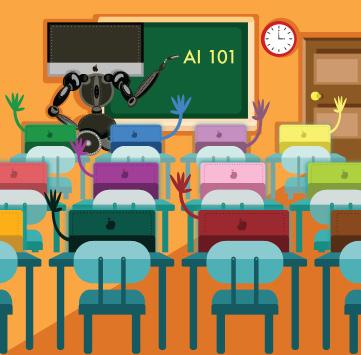
The task of drawing this line falls on the UM Undergraduate Honor Council. Established in 1986, the Council hears cases of students accused of plagiarism, cheating, collusion and academic dishonesty.
“While we, the Honor Council do not have a written policy on AI, we view it as plagiarism and are supporting the faculty members stance on usage within their classroom as outlined in their syllabus,” they said in a statement to The
Violations are broken into three categories (Class Violations I, II or III) depending on the severity of the actions. Nearly a year after the launch of ChatGPT, the Council has not yet heard an AI Class III Violation, traditionally for repeat offenders, or any appeals of a Class I or II violation.
“There have been Academic Integrity incidents submitted that involve AI that were resolved on the Academic Integrity Committee level as they fell under the Class I violation of plagiarism,” they said.
With nearly no precedent set by the Honor Council, the guidelines for AI usage have almost entirely been led by individual professors. While some have banned the technology outright, others are finding ways for it to strengthen their curriculum.
Following a discussion with her stu -
dents at the beginning of the semester, English professor Dr. Pamela Hammons decided to alter her syllabus to allow for the incorporation of AI technology.
“My students and I discussed AI at length early in the semester, and I learned from [my students]them about how they use it when they write,” Hammons said. “I discovered, for example, that they sometimes use AI as a tool to help them play with, reflect upon and develop their ideas for writing assignments.”
Within her class syllabus, Hammons has made two key changes.
“The first change is to make clear that there is no penalty for using AI if it helps, as long as they take an additional step in their learning process by reflecting explicitly upon and sharing how they have used the tool,” Hammons said.
“The second change is meant to allow for ways of engaging deeply with literature that encourage a greater individual connection to it that might—for some students—be more purposeful than writing in a strictly analytical manner and that might discourage overreliance on AI.”
These emotional and creative responses are less easily replicated by generative language models like ChatGPT, she noted. Hammons also specifies that students are required to detail how AI was utilized in the writing process for any applicable assignments.
Dr. Doctor Paul Russel Shockley, a professor of philosophy and religious studies in the College of Arts and Sciences, has also allowed students to open up a dialogue with ChatGPT.
“What motivated me to incorporate AI is the idea to recognize the educational resources that AI can provide, but also to be able to critique the claims and the positions, etc, that AI gives,” he said. He plans to have students engage in discussions with chatbots and reflect on the AI-generated responses.
Shockley believes that AI has the potential to allow students to think critically in new ways by bouncing ideas off the constantly evolving, collective in -
telligence of the internet. According to him, AI has the ability to go beyond the individual mind and, with this strength, it creates an interesting educational opportunity for students.
“No matter if we are engaging AI, or engaging each other, critical thinking is paramount,” Shockley said. “The focus should be on the application of critical thinking skills, regardless of the medium.”
Isabella Lozano, a senior creative advertising and sports administration major, has taken advantage of AI to aid her in the process of creating visuals. For a recent mockup assignment, she gathered photos of a train cabin seat and a bookstore then used AI visual tools to merge the two together. She instructed AI to add legs to the seat and a rug under the coffee table, creating a lifelike image from parts of other real photos.
“It is like any other system. I would fully say that I used AI to make this, but I made it technically.” Lozano said. “I use this to help me.”
In many of her creative design classes AI is encouraged, but students are always required to cite any AI technology used. The inclusion of a citation may also be helpful in denoting the difference between plagiarism and using AI as a helping-hand, she explained.
“If you use it, you have to cite it. And if you don’t, and if you get caught, then that is plagiarism,” Lozano said.
Because of the difference among professors, she advises any AI incidents to be approached by the Honor Council on a case-by-case basis until a further consensus is reached on its impact on enhancing the collegiate experience.
While the confusion among acceptable usages of AI remains to be debated, it seems likely that AI will eventually be as essential to the learning process as the internet is today.
“Whether we like it or not, this is the way the world is going, we must embrace it and learn how to use it,” said Anthony Miles, a senior at the University of Miami majoring in motion pictures.
{NEWS} //2 THE_MIAMI_HURRICANE (0ct0ber_4;2023)
/C0DY_LeBR0CQ_&_JENNY_JAC0BY Staff Writer, Editor-In-Chief//
Roberta Macedo// Graphic Design Editor
<What’s_inside_GPT-4’s_”brain”_anyways?//>
//PATRICK MCCASLIN Business Manager//
Shortly after ChatGPT ballooned in popularity, Microsoft released a paper: “Sparks of Artifcial General Intelligence: Early experiments with GPT-4.”
Artifcial Intelligence? Sure. Most people are familiar with the day-to-day AI tools of Siri or Google Maps, which use algorithms and extensive data to make predictions based on the input. Getting computers to replicate human tasks has been a goal and reality since the 1940s. As early as 1966, a computer program named ELIZA could interpret and output human language akin to today’s ChatGPT.
This early conversation is taken from the inventor’s academic paper about his chatbot:
“Men are all alike,” the human wrote to the program.
“IN WHAT WAY,” Eliza replied.
“They’re always bugging us about something or other,” the human wrote.
“CAN YOU THINK OF A SPECIFIC EXAMPLE,” Eliza replied.
“Well, my boyfriend made me come here,” the human wrote.
“YOUR BOYFRIEND MADE YOU COME HERE,” ELIZA retorted.
ELIZA was so convincing that some users couldn’t believe they were talking to a computer. To some, ELIZA may have seemed like artifcial general intelligence (AGI), the theoretical concept that a machine could learn and think like a human, implying it has self-awareness and a consciousness.
The misconception that one is talking to a human when, in reality, it’s a computer is a basic test for AGI. Computer scientists had achieved a couple “sparks” of this in the mid-century in the form of ELIZA, among others.
In Microsoft’s recent paper, researchers tested GPT-4, the most advanced publicly available large language model (LLM), on a wide array of tasks that tested the model’s creativity and curiosity. The paper demonstrates the powers of a computer that can interpret complex, emotional, open-ended situations.
This is only “sparks” of AGI though. The possibility of achieving full-fedged AGI remains hotly debated. Open AI, the company behind ChatGPT and GPT-4, has gone so far as to fund, research and report extensively about safety precautions in case they achieve AGI.
Sam Altman, the CEO of Open AI, has equated AGI with the “median human,” a term he uses for a computer that could replace a co-worker. Since GPT-4 emerged and ChatGPT grew in popularity, Open AI’s rhetoric around AGI has suggested that it is feasible.
Dr. Ubbo Visser, the graduate director of the University of Miami’s computer science department and a member of the AI feld since 1986, remains dubious about current prospects of AGI.
“I don’t think right now we can get there because we would have to have social intelligence, to have emotional intelligence. You have to have
The scaling is incredible. As AI models have improved in the past decade, the advances have come from more computational power and the ability to process inputs, especially visual. Instead of trying to copy what the brain does, AI models focus on computer-specifc methods and take inspiration from how the brain works.
Ultimately, AI is still only complicated algorithms making sense of a massive conglomeration of data. Despite acting remarkably human at times, the machines lack the precision humans take for granted.
“Not only that you’re being able to speak in a certain language and choose your words wisely. You are also being able to mix this with emotional intelligence,” Visser said. A human can evaluate, “Is it a safe environment? Is your discussion partner friendly or out to harm? All this information we have as humans. We feel it. We don’t think about it.”
But what if these AI models, chatbots for example, could feel as humans do through the embodiment of a robot? Visser works in both of these felds, with an extensive history in robotics. Part of his work at UM focuses on designing service robots that use LLMs for communication and other AI for additional human tasks, such as object identifcation.
“Robotics have an important piece which is the interaction and embodiment with the physical world. So they interact with us, they can interact with other objects and then sense, like we do, in real time,” Schwartz said.
Between robotics and deep learning, the feld that allows AI to extract detailed data, computers are improving at processing the inputs that humans only need to passively understand.
Combined with the feld of quantum computing, which could theoretically make computers exponentially faster at processing very large datasets, there seems to be potential for AGI in the next several decades. The feld is always rapidly changing, making speculation diffcult, but perhaps in a world where computer hardware can process a tremendous range and amount of inputs, AGI could exist.
a deep understanding of how humans work and how they feel and how is this possible? How would you represent that? Right now, we’re just putting a bunch of words in there and telling them to learn the connections between words,” Visser said.
Current LLMs work by predicting the next token, such as a word, based on what it has understood from an extremely large dataset. The model uses “weights” to help assign priority to its data. If there’s an error, a process called “backpropagation” helps the model learn from its mistake and avoid them in the future. Over the past few decades, these fundamental tricks that allow GPT-4 to perform like a human have remained the same.
“That has not changed, really. What has changed is the sheer dimensions I mentioned. Instead of 1000s of weights, now you have trillions of weights,” Visser said.
For example, in visual processing, experimentalists learned how the brain receives an image to further their own understanding of how a machine could also “see.”
“The brain processes inputs hierarchically, so when we see a cat we process frst the orientation and edges of the image and then textures and parts of shapes and objects until we can identify the cat,” said Odelia Schwartz, an associate professor of computer science whose research is at the intersection of the brain and AI.
Computer scientists applied this principle to AI models to help it make sense of images. Still, experimenting with the model reveals shortcomings indicative of its non-human nature. In one study, the machines with this visual processing ability were asked to process a cat with the skin of an elephant. While humans identifed the animal as a cat, the machine identifed an elephant, revealing a bias towards the texture of the animal.
This is where Visser objects with perhaps the most important point: the data. GPT-4 trains itself off of the millions of users who have contributed to websites such as Stack Overfow, Reddit and Wikipedia.
“Who can guarantee that that information that is out there is actually true?” Visser said.
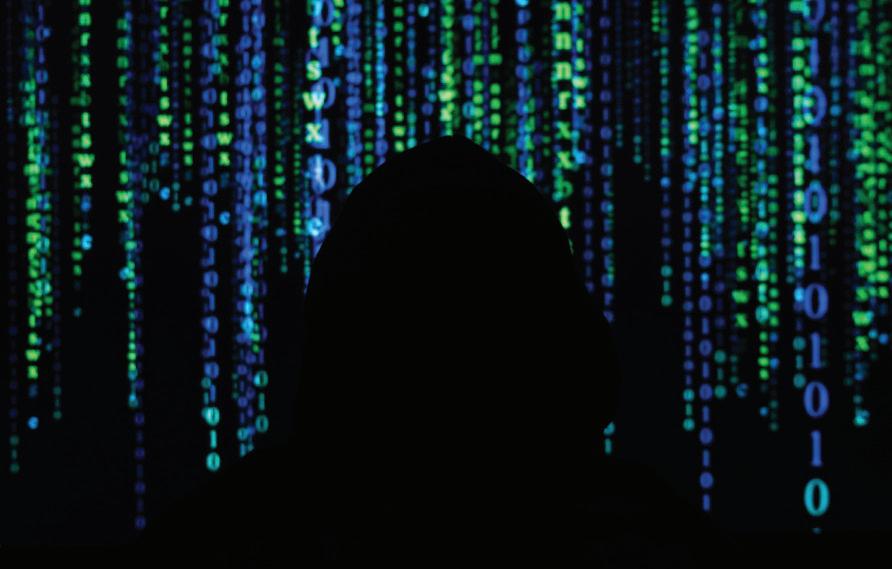
The falsities and inaccuracies within these data sets contribute to the errors of GPT-4, still present in Microsoft’s experiments.
Not only do computers need to accurately process incredible amounts of data, but it needs to be very strong data. The subtleties and details that one learns over 30 years of living experience are summarized bluntly on the Internet. For Open AI, with its undoubtedly massive datasets, architectural strengths and thorough training systems, it still lacks a human’s extreme attention to detail. The question will remain, can humans create a database that has the same information as the human brain?
//3 NEWS THE_MIAMI_HURRICANE (0ct0ber_4;2023)
Emily Hope Rice //Staff Photographer Dark figure sits in front of the computer screen
<Transf0rming_Healthcare:_How_AI_is_rev0luti0nizing_Medicine/
Earning over $175 million in research grants this past year, the University of Miami’s medical research programs are turning to artificial intelligence to transform the healthcare field.
According to The Centre of Economic Policy Research, implementing this technology could potentially lead to savings that range from $200 to $360 billion annually. These increased savings promise to improve labor efficiency and reduce healthcare spending, while elevating the quality of care received by patients.
AI works by emulating behaviors of human intelligence through specialized machine systems developed by computer science. Primarily employed for drug discovery and rediscovery, AI is especially useful in predicting chemical structures to help create or enhance existing medications for several diseases.
“Concerning the pandemic, the biggest use of AI and machine learning from my understanding is to tease out COVID’s biological secrets and identify the few molecules which has ended COVID among the millions and reduced the time to market drugs,” said Head of Innovation and Emerging Technology at GlaxoSmithkline, Subroto Mukherjee.
As mentioned by Mukherjee,
the use of AI in the development of new medications and vaccines is contributing to more effective responses to several viruses, with its most important trial having played out during the global pandemic.
This same technology is being used by research students at UM to push the boundaries of what
 “One thing I love about AI in what I do is that I have the opportunity to help so many people in need”
Joey Shulz
PhD student in molecular cell and developmental biology
“One thing I love about AI in what I do is that I have the opportunity to help so many people in need”
Joey Shulz
PhD student in molecular cell and developmental biology
is possible in pharmacology.
“One of the overall issues in the field of pharmacology is the amount of time it takes and the robust pipeline only to realize a drug doesn’t work,” said Ph.D. student Joey Shulz, who is part of the molecular, cell and
of drug development can allow researchers to cut the timeline of what would conventionally be a 10-15 year process by several months.
Shulz is currently engaged in three ongoing projects focused on repurposing medication and leverages AI as a tool to design treatments that mitigate the effects of illnesses and enhance treatments that already exist.
The primary objective of Shulz’s current project, which involves researching treatments for HIV, is to improve the effectiveness of pre-existing antiviral therapies.
Antiretroviral therapy (ART) is the most commonly used method to combat effects of this disease. Often, patients have a strict regimen involving several medications and must closely follow their doctor’s instruction to avoid developing drugresistant strains of the virus.
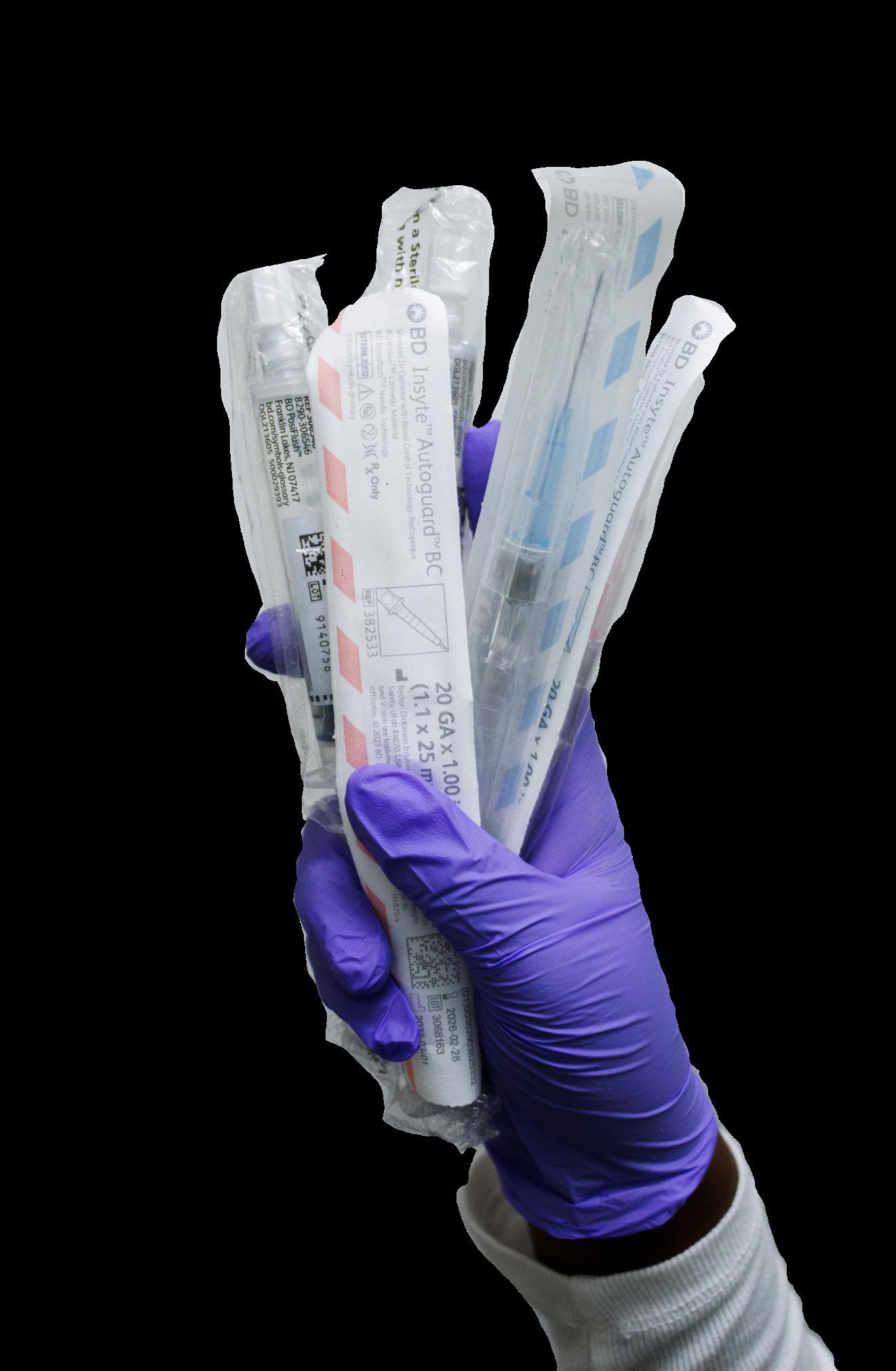
Shulz’s research seeks to combat these mutations and develop more effective and resilient drugs for HIV treatment, especially with the help of AI.
This new technology aids in this process by utilizing predictive analysis of large datasets, including in areas such as patient history, clinical
tailored to individual patients.
“Metaphorically speaking, I am taking a key and seeing how well it fits into the lock,” said Shulz. “I can then use that lock to mimic the key, but instead it’s a brand new novel compound.”
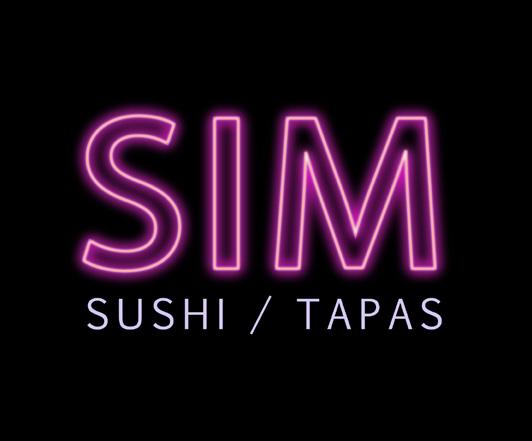
it as a resource to guide him in the creation of new drugs or repurposing existing drugs for his projects.
Predictive analysis can then recognize certain patterns or faults in the data that a student may not be able to see, making it much more effective for researchers in the production of new pharmaceuticals.
As AI continues to grow and evolve, technology will be able to then predict these diseases before they even appear, allowing the technology to occupy more significant roles in medicine in the future. Dedicated to the advancement of a proactive healthcare system powered by AI, Schulz and fellow medical students’ research at the University has the potential to elevate the quality of life for many by simplifying the
“One thing I love about AI in what I do is that I have the opportunity to help so many people in need,” said Shulz. As the UM’s Miller School of Medicine continues to harness the capabilities of artificial intelligence in medicine, students like Shulz are preparing to transform healthcare practices and innovate the process of drug discovery in a digitallyempowered world.
THE_MIAMI_HURRICANE (0ct0ber_4;2023) NEWS //4
//LAYLA GRAVELLE Staff Writer// >
Charisma-Jones Contributed Photograph
<Artificial_Intelligence:_The_third_party_candidate/>
//RACHEL PETROVICH Staff Writer//
Creativity, confusion and controversy have defned the introductory stages of artifcial intelligence integration into our society. When it comes to political campaigns and the upcoming 2024 election, this combination is changing the way politicians sway public opinion.
In June 2023, presidential candidate and Florida governor Ron DeSantis’ campaign used AI to generate images of his opponent, former president Donald Trump, with Anthony Fauci, a premier target of the Republican party base for his response to the COVID-19 pandemic.
The video, posted on X, displayed a collection of images of Trump and Fauci together. Some are real photographs, but three are AI-generated photos of the two embracing.
Lawmakers fear the use of deceiving AI images could potentially cause some voters to steer away from candidates in 2024.
“There are two ways politicians are using it,” said Dr. Yelena Yesha, UM professor and Knight Foundation Endowed Chair of Data Science and AI. “One is biasness, trying to skew information and change the sentiments of populations, and the other is the opposite effect, using blockchain technology that will control misinformation.”
Conversations about regulating the dangers of AI have already begun circulating on Capitol Hill, starting with the U.S. Senate hearing on May 16, 2023. The hearing included Sam Altman, CEO of OpenAI, who expressed concern of potential manipulation of his company’s technology to target voters.
The most notable OpenAI technology is ChatGPT, which has seen the most rapid user con-
sumption rate in internet history, surpassing the success of applications like TikTok and Instagram in its frst two months.
The platform initially banned political campaigns from using the chatbot, but its enforcement of the ban has since been limited.
An analysis by The Washington Post found that ChatGPT can bypass its campaign restriction
will use it to create ‘deepfakes’ to support false narratives. Whether this misinformation will infuence voters is an open question.”
Deep fakes, an enhanced form of AI that alters photo and video, has reached the political mainstream. Following President Biden’s re-election announcement last April, the Republican National Committee (RNC) re -
Leader Chuck Shumer (D-NY) recently leading a closed-door meeting on Sept. 13 with highprofle tech leaders, including Elon Musk and Mark Zuckerberg.
The goal of this meeting was to gather information on how prominent big tech platforms could enforce oversight within the use of AI. Senate sessions on the matter will continue through -
ly to incentivize AI developers to inform consumers about the source and validity of AI-generated content,” Klofstad said.
The extent to which the federal government can have major infuence over regulating AI is unclear as artifcial intelligence continues to develop.
“It should be regulated, but it should not to the point where the progress can be slowed down by regulatory processes,” Yesha said. “If you have too much regulation, it may at a certain point decelerate science and the adoption of innovation.”
A signifcant reason for AI regulation efforts stems from the anticipation of foreign infuence in our elections. Russianled misinformation campaigns played a part in the 2016 election, and elected offcials foresee advancement of foreign meddling in tandem with AI’s improvement.
“At a certain point, as AI becomes more developed, if it falls in the wrong hands of totalitarian regimes or autocratic governments, it can have a negative effect on our homeland.” Yesha said.
However, AI’s applications do provide numerous benefts for political campaigns.
A prominent beneft of AI in the political arena is its messaging capabilities. With a chatbot’s ability to instantly regurgitate personalized messages when fed consumer data, essentially taking over the work of lowerlevel campaign staff, the ability to garner donor support is vastly expanded.
ban when prompted to create a persuasive message that targets a specifc voter demographic.
“AI will certainly be used to generate campaign content,” said UM professor of political science Casey Klofstad. “Some
leased a fully AI-generated ad depicting a fctional and dystopian society if Biden is re-elected in 2024.
Congress has furthered its efforts in establishing boundaries for AI, with Senate Majority
out the fall, with Schumer hopeful for bipartisan support and legislation across Congress.
“I would be reluctant to see the government take a heavy hand in regulating AI, but policy could be tailored more narrow -
“Campaigns have always adapted to new modes of communication, from the printing press, to electronic mailing lists, to websites, text messaging and social media.” Klofstad said. “I expect AI will not be different in this regard.”
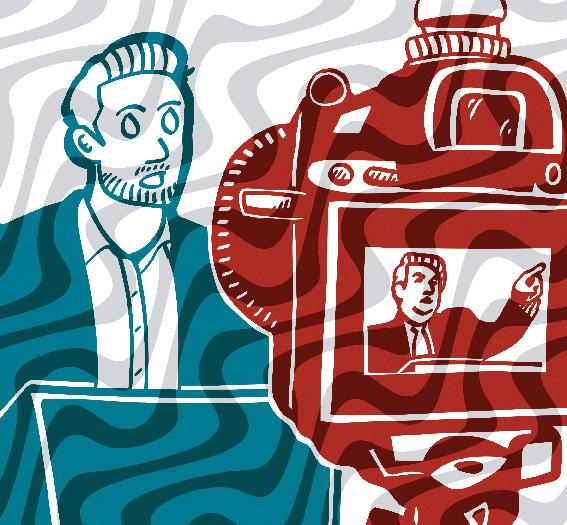
//5 NEWS THE_MIAMI_HURRICANE (0ct0ber_4;2023)
Matt Pokorny// Staff Graphic Designer
<The_value_of_AI_in_envir0nmental_remediati0n/>
//LIA MUSSIE Staff Writer//

Artifcial intelligence is enabling us to rethink how we integrate information, analyze data and use the resulting insights to improve decision-making. The power of AI is revolutionizing various industries, and environmental science is no exception.
With increasing threats of environmental stressors, AI is emerging as a powerful tool in detecting, mapping and mitigating these effects for the future.
As AI increasingly drives innovation and becomes a facet of everyday life, fears about its capabilities are growing.
It doesn’t help that the media and pundits are stoking those fears, suggesting that AI could take over the world, lead to losses of control and privacy and devalue the importance of humans in the workforce.
According to Business News Daily, 69% of people worry that AI could take over their jobs entirely, while 74% predict that AI will eliminate all forms of human labor. However, its potential to remedy environmental problems can be a benefcial use of the technology.
From monitoring air and water quality to predicting the spread of pollutants, AI is already playing a crucial role in safeguarding our environment and public health.
As 2030 quickly approaches, the agreed deadline for hitting climate targets, the world is on track to achieve only 12 percent of the Sustainable Development Goals (SDGs), with progress plateauing or regressing on over half of the set goals.
“How can we use artifcial intelligence – the technology that is
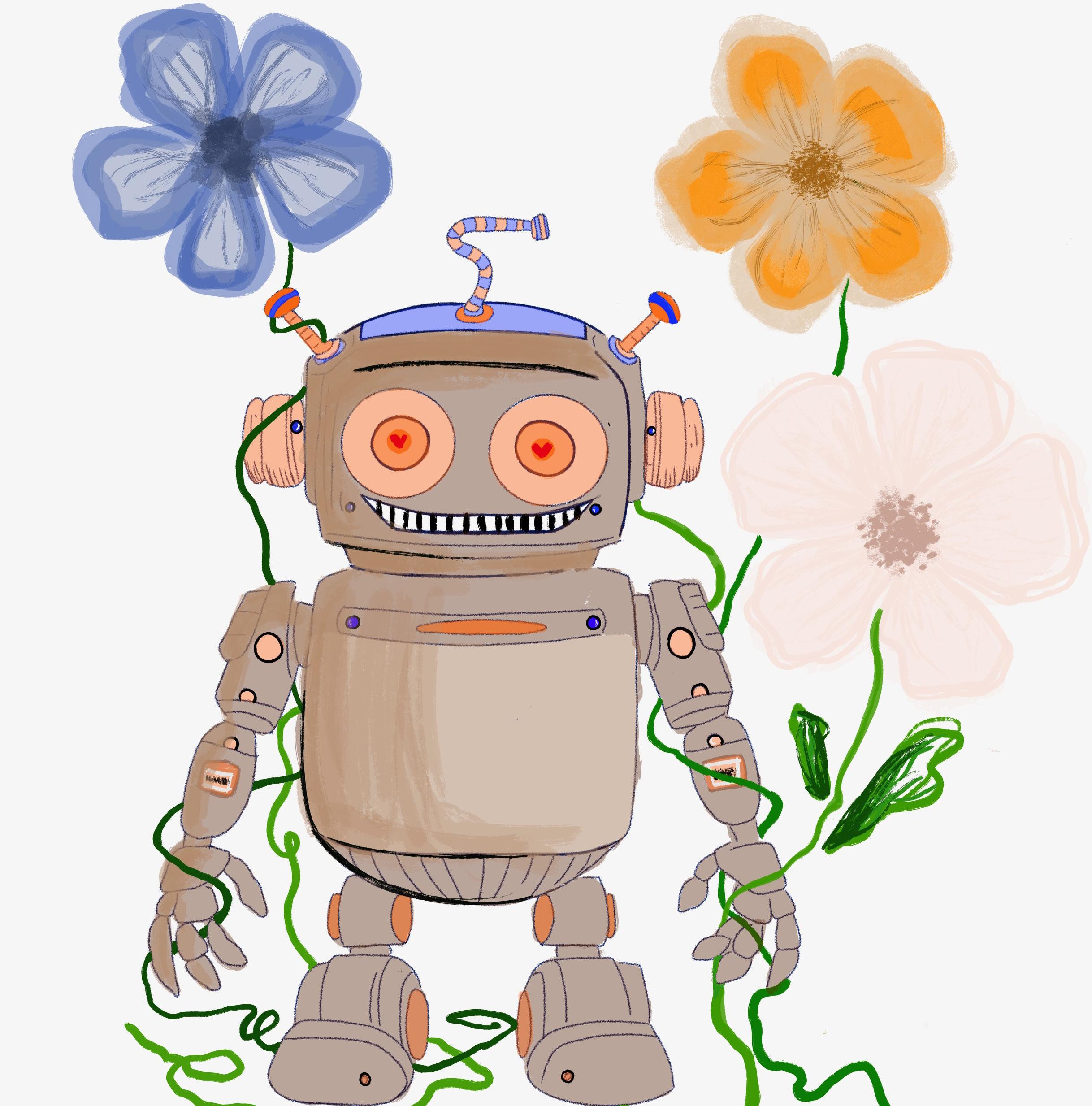
revolutionizing the production of knowledge – to actually improve lives; to make the world a little bit safer, a little bit healthier, a little bit more prosperous; to help eliminate poverty and hunger; to promote health and access to quality education; to advance gender equity; to save our planet,” said Secretary of State of the United States Anthony Blinken, at the 78th Session of the United Nations’ General Assembly.
The most prominent applications of AI are currently in detecting, mapping
the environment can alert to harmful conditions and propel action.
AI models can also create analytical maps based on historical or statistical data to understand trends and trajectories regarding toxin levels, weather patterns, human activities and other relevant factors. Those models can also evaluate satellite imagery to identify areas where specifc conditions may be present and be trained to recognize patterns or changes, which can be extremely important in forecasting future dangerous weather events, enhancing agricultural productivi-
identify the sources and pathways of toxins and optimize mitigation strategies, crucial for effective mitigation and intervention, while monitoring the success of mitigation efforts.
If these practices for AI are deployed effectively and responsibly, they can drive inclusive and sustainable growth for all, which can reduce poverty and inequality, advance environmental sustainability and improve lives around the world. However, real concerns exist that the developing world is be-
of them.
To succeed in directing AI toward achieving the SDGs, complete support and participation from the multistakeholder community of system developers, governments and organizations, and communities is required.
Meanwhile, the need for AI governance is imperative, and support from federal and state governments as well as corporations is crucial to this transition. As AI’s footprint grows and nations work to manage risks, we must maximize its use for the greater good and deepen cooperation across governments to foster benefcial uses for AI.
The United States is committed to supporting and accelerating efforts on AI development, hoping to foster an environment where AI innovation can continue to fourish. Secretary Blinken mentioned the U.S.’s creation of a blueprint for an AI Bill of Rights and Risk Management Framework at the UNGA, which would guide the future use, design and safeguards for these systems.
The US has announced a $15 million commitment, designated to helping more governments leverage the power of AI to drive global good, focused specifcally on the SDGs. Commitments and contributions have been made by other countries and large corporations, such as Google, IBM and Microsoft.
We are at an infection point, and the decisions we make today will affect the world for decades to come, especially when it comes to AI and climate change. AI has the potential to accelerate progress, an immense responsibility to be taken by governments, the private sector, civil society and individuals that must consider the social, economic and environmental aspects of sustainability.
{OPINION} //6 (0ct0ber_4;2023) THE_MIAMI_HURRICANE
Gianna Guirgis// Staff Graphic Designer
<AI_is_taking_0ver_the_media,_but_are,_humans_out?/>
//ETHAN MANNELL0
Media and emotion go hand and hand. Media and emotion go hand and hand. Whether it is anger, sympathy, happiness or grief, books, movies, TV shows and podcasts are only effective and successful if they make consumers feel something. If they don’t, readers, viewers and listeners will fnd something else that does.
Previously, technology never made big enough inroads in the media to replace human labor. While robots worked for free on production lines or creating complex equations, they were incapable of producing heart-wrenching movies or hilarious tv shows. In other words, they could never replace a human ability to produce content that evokes emotion. With recent advancements in Artifcial Intelligence, though, that is changing.
AI tech is slowly taking over the media world. As of now, it is used for simpler tasks like writing press releases, creating SEO titles, and conducting research, but that will soon change.
The recent Writers Guild Association (WGA) strike is the most recent evidence that AI’s role in media will expand. One of the WGA’s main concerns in their new contract negotiations with the Alliance of Motion Picture and Television Producers was AI technology. The WGA wanted to prevent AI from writing or rewriting literary material and from being “used as source material.”
While the WGA didn’t get the full ban on
<The_Miami>
<HURRICANE/>
Founded 1929
AI it wanted, the fnal deal with the AMPTP is being touted as a “triumph” for Hollywood writers. It protects writers in a series of ways, most notably by prohibiting studios from using AI to create full scripts. A
there is no doubt media corporations will increasingly use it to create new content. The main question is how far will it actually go, and what will the quality of the work be? That is where emotion plays a massive role.
are viewing, reading, or listening to and “form the basis of aesthetic experience, enjoyment, and entertainment.”
This research should give those who were worried about their jobs being taken by AI some hope. According to Global Data, AI powered machines have no concept of selfawareness and consciousness, or sentience. Estimates vary on when AI will gain sentience, but most experts agree that it will be no less than 10-20 years. Unlike AI, humans have evolved to understand emotion and they have gained empathy due to that. Human writers can produce scripts based on their genuine emotions, not some machine learned imitation. That undoubtedly gives them a leg up.
Nevertheless, AI is not far behind. While it hasn’t produced any corporate emotional content yet, many have shown it can produce emotional writing. Blogger Scollurio shows how depending on the prompt, AI can defnitely produce emotional content. But many others argue this ability is limited. The AIContentfy team argued that AI lacks the creativity and complex understanding to create truly emotional content. Furthermore, Blogger Anuska Gopal argues AI struggles to create unique content that is compelling and has personality.
Staff
EDITOR-IN-CHIEF Jenny Jacoby
NEWSROOM: 305-284-4401
editor@themiamihurricane.com
BUSINESS OFFICE: 305-284-4401
FAX: 305-284-4404
For advertising rates call 305-284-4401 or fax 305-284-4404.
human writer must be involved to complete any process, and AI cannot edit scripts written by a human.
However, as AI becomes more advanced,
MANAGING EDITOR
Lauren Ferrer
NEWS EDITORS
Sydney Billing
Caroline Val
OPINION EDITOR
Pari Walter
ARTS & ENTERTAINMENT EDITOR
Layomi Adeojo
ASST. A&E EDITOR Morgan Fry
SPORTS EDITOR Luke Chaney
Zachary Macer
PHOTO EDITOR
Alexandra Fisher
Cecilia Runner
GRAPHIC DESIGN EDITOR
Roberta Macedo
COPY CHIEF Ashley Sewall
WANT TO WORK
PRINT EDITORS
Anaya Jhaveri
Katie Stute
BUSINESS MANAGER
Patrick McCaslin
FACULTY ADVISOR
Antonio Mora
FINANCIAL ADVISOR
Steve Priepke
NECSUS, a media research company, says that emotions are humans’ main motivation for watching and coming back to the media. Emotions connect consumers to what they
Merging AI with creativity to create emotional content is something that media corporations will strive for in the years to come, but it won’t be easy. Media consumers are heavily reliant on feeling emotion and AI is in its infant stages of evoking it. Humans have evolved to understand and evoke emotion in complex ways, but can it be enough to outweigh the cost benefts and turnaround time of AI? That question is one that will probably be up to the audience.
<To_reach_a_member_0f_the_staff_visit_themiamihurricane.com’s_c0ntact_page/>
The Miami Hurricane is published biweekly during the regular academic year and is edited and produced by undergraduate students at the University of Miami. The publication does not necessarily represent the views and opinions of advertisers or the university’s trustees, faculty or administration. Unsigned editorials represent the opinion of The Miami Hurricane’s Editorial Board. Commentaries, letters and cartoons represent only the views of their respective authors. The newsroom and business o ce of The Miami Hurricane are located in the Student Activities Center, Student Media Suite 200.
LETTER POLICY

SENIOR FINANCIAL ASSISTANT
Michelle Starbeck
The Miami Hurricane encourages all readers to voice their opinions on issues related to the university or in response to any report published in The Miami Hurricane. Letters to the editor may be submitted typed or handwritten to the Student Activities Center, Student Media Suite 200, or mailed to P.O. Box 248132, Coral Gables, Fla., 33124-6922. Letters must be signed with a copy of your Cane Card.
ADVERTISING POLICY
The Miami Hurricane’s business o ce is located at 1330 Miller Drive, Student Activities Center Student Media Suite 200. The Miami Hurricane is published
every other Wednesday during the university’s fall and spring academic terms. Newspapers are distributed for free on the Coral Gables campus, the School of Medicine and o -campus locations.
DEADLINES
The conditions of agreement for advertisers are outlined on the ad contract form. Please direct any and all questions related to advertising to the Business Manager, Patrick McCaslin. Questions can be emailed to pkm492@ themiamihurricane.com.
AFFILIATIONS
The Miami Hurricane is a member of the Associated Collegiate Press, Columbia Scholastic Press Association and Florida
//7 OPINION (0ct0ber_4;2023)
THE_MIAMI_HURRICANE
College Press Association.
US? Visit themiamihurricane.com/apply or email editor@themiamihurricane.com.
FOR
Associated Collegiate Press Hall of Fame Newspaper
An
Leah Culbert// Staff Graphic Designer
ART
“Fundamentally_misunderst00d”: NFT’s_digital_impact
//BY AVA PARK STAFF WRITER//
Today’s technological innovation has taken theory and turned it into a reality — artifcial intelligence is now capable of curating and creating art of its own. New developments paired with the rise of NFTs have caused legislative skepticism in both the art world and economy.
Despite the extensive discourse about non-fungible tokens (NFTs), many still don’t understand what they are or their place in the art world. For those unfamiliar with fnancial technology and art, tech jargon like NFT, AI, blockchain and digital art can be confusing.
NFTs are distinct digital certifcates written into the blockchain — or, digital distributed database — that can represent both digital and physical assets. In terms of art, NFTs serve to verify ownership and authenticity of artworks to ensure that an artist’s piece is irreplicable. The discussion of NFTs includes the topic of artifcial intelligence. AI can curate personalized selections of art for collectors based on their individual preferences in style, artist and subject matter.
Dr. Jill Deupi, the director and chief curator of the Lowe Art Museum, is not afraid of AI, especially not in a curatorial sense.
Deupi referenced an exhibition held earlier this month at Duke University’s Nasher Museum of Art entitled “Act as if you are a curator.” The exhibit was entirely AI-curated, but not entirely accurate.
ChatGPT used a database with all 14,000 of the Nasher’s collected works to curate an exhibition that was not only incohesive, but also had mistitled works and false or misleading descriptions.
“That experiment was clarifying,” Deupi said. “It proved that, at least at this stage, AI is not going to displace human-based curatorial prac-
tice.”
However, Deupi did express concern regarding the use of AI to recycle copyrighted works and transform them into something new, a practice some artists may object to.
“The most virulent threats are copyright violations for artists be-
their works. Deupi explained that AI should be more properly regulated, and that a copyright should be enough to secure artistic works.
“Art is a very powerful tool for propaganda, and in the wrong hands — and of course, behind AI there are the human programmers —

NFT, the artist can ensure that their art cannot be copied through the terms of their license — artists can give or deny permission for subsequent owners of their NFTs to use their art for further creation.
For AI and computer-generated art, however, there are no intellectu-
Innovation and Technology for the 21st Century Act, would provide guidance on the qualifcation and management of digital assets, if passed.
The Securities and Exchange Commission (SEC), the government organization responsible for regulating the US securities industry, has pursued enforcement actions against several companies for selling “unregistered securities,” but the greater issue lies in how the SEC qualifes securities, which are assets with economic value like stocks.
UM fnance law professor Dr. Vanessa Guzzi, claims that NFTs are “fundamentally misunderstood.” She explained that whether or not NFTs can be defned as securities is still unclear. The SEC has settled with the companies they’ve targeted, leaving no case law or clear guidelines to follow.
“We are in a period awaiting more clarity on whether particular crypto assets and NFTs are securities. And, once we get a regulatory framework — whether through Congress or case law — innovation and creativity will be able to fourish,” Guzzi said.
The debate on whether NFTs are securities is central to the transitioning art world. If marketed improperly, an unregistered artistic NFT could be considered a security by the SEC.
Registering NFTs as securities is extremely expensive and the average artist may not have the means. This starving artist may resort to selling their NFTs as commodities, not securities, but without a strong legal framework, they are subject to signifcant legal risk.
cause so much material is just being pulled willy-nilly from the web and recycled and reused without permissions,” Deupi said.
Despite her concerns over AI art forgery, she rejected the notion that artists should create NFTs of
some nefarious works of ‘art’ can be generated by AI, depending on what the prompts are,” Deupi said.
If an artist wants to sell their artwork, be it digital or physical, there is an intrinsic risk that their work could be forged. By creating an
al property rights, meaning it cannot be copyrighted, trademarked or considered intellectual property. There are no existing legal guidelines regarding AI and NFTs, but bills moving through Congress, including the House Stablecoin Bill and Financial
Ultimately, NFTs exist to help artists, and AI poses no real threat to art at the present moment. Regardless, NFTs and AI are here to stay. The question is, where do we go from here?
{ARTS & ENTERTAINMENT} //8 (0ct0ber_4;2023) THE_MIAMI_HURRICANE
Matt Pokorny // Graphic Designer
<Day_in_the_life_in_Miami: ChatGPT_editi0n/>
//BY LIA MUSSIE CONTRIBUTING WRITER//
ChatGPT is a natural language processing tool driven by artificial intelligence. It allows users to have human-like conversations with a chatbot, answers questions and assists with tasks like composing emails, essays and resumes.
I put this AI powerhouse to the test and asked ChatGPT to plan a day for me in Miami. After following its suggestions, I experienced long day full of culture, food and entertainment.
Morning
The first item ChatGPT had on our agenda was a morning on South Beach. ChatGPT recommended making time to relax on the sandy shores, take a dip in the ocean and enjoy a relaxing yoga session.

I started my day at 5 a.m. to witness the golden sunrise peak over the horizon. I then unfurled my mat for a selfguided beachfront yoga session with the gentle water sounds in the background.
After living in Miami for over three years, the novelty of South Beach has worn off. It is a frequently packed and quintessential tourist spot, but the morning quiet and lack of visitors made for an enjoyable experience.
AI then said to grab breakfast, giving me options of cafecito and pastelitos or an acai bowl or avocado toast. Because I don’t drink coffee, I made my way to Pura Vida, a restaurant that serves healthy dining options in a beachy setting.
After eating my PB Lover acai bowl, AI suggested a stroll through the Art Deco Historical District. It was still relatively empty as I perused Ocean Drive, Collins Avenue and Lincoln Road, admiring the pastel art deco buildings and colorful artwork and
murals that line the streets. It’s a fairly pedestrian-friendly area known for its shopping and dining.
Lunch
After heading home to clean up, AI recommended brunch at Greenstreet Café, a place I frequent which serves classic American cuisine in Coconut Grove. I ordered cinnamon roll pancakes, which came highly recommended from the server. No matter how many times I visit, I always have a great experience.
Afternoon
Next, I ventured to Little Havana — Miami’s historic Cuban neighborhood — to window-shop, explore the colorful streets and soak up the Latin street art and
ChatGPT recommended a visit to the Domino Park, where large groups of people were playing chess and domino games. It then directed me to the Wynwood Walls, a renowned outdoor street art gallery, and I bought a ticket to stroll through the murals, something I don’t usually do.
Wynwood is one of my favorite neighborhoods in Miami, and is a recommendation I share with many. While the walls are appealing, the entire Wynwood area holds unique murals that don’t require a ticket, which many wouldn’t know unless they have previously visited.
The Wynwood Marketplace was my next stop, an outdoor venue that hosts food trucks, artisan shops and events. An employee recommended I visit the Pink Paloma truck, where I ordered barbacoa tacos to enjoy while browsing the vendors and shops.
Late Afternoon
For a late-afternoon cultural excursion, AI suggested I check out the Perez Art Museum. This was my first time at this museum, and its waterfront views and picturesque art curation made for a scenic afternoon.
I wish that the itinerary included more time to spend here, but I only had 45 minutes to see as much as I could.
I then walked to Bayfront Park, which provided the perfect combination of city and water views. The featured giant ferris wheel of Bayside Marketplace provided views of Ferris Island and Virginia Key. I typically only go to Bayfront for a run along the water, but newer resi dents and visitors favor this area of downtown.
ChatGPT mentioned a happy hour at a rooftop or waterfront bar, so I decided to visit Monty’s Raw Bar in Coconut Grove for drinks and appetizers while watching the boats on the harbor. The timing of happy hour made for prime viewing of the sunset.
Evening
After going home to change again, some friends and I headed back up to Little Havana to check out the notable Versailles Restaurant for a Cuban din ner. I had never heard nor visited this iconic landmark of the Little Havana community.
Nightlife ChatGPT recom mended staying in Wynwood because of its lively nightlife scene. We started at the trendy food hall 1-800-Lucky and enjoyed the DJ sets, a cocktail and softshell crab bao buns before heading to the open-air Brick nightclub for danc -
ing and R&B music.
ChatGPT also recommended latenight bites, including food trucks and popular late-night eateries like “La Sandwicherie’’ and “Pizza Rustica,” but my wallet and I were exhausted and full from this packed day, so we headed back to Coral Gables and called it a night.
Final Thoughts
ChatGPT did better than I thought. I had no idea what to expect when asking the generator to plan my day, but it fulfilled my request and delivered a busy day of Miami sightseeing and exploration. However, I prefer to leave room spontaneity and adventure, which this packed itinerary didn’t allot time for. Its responses tended to lean towards generic recommendations often found in a Miami guide book rather than local spots that are less frequented by tourists. As a result, some excursions were overpriced and crowded.
Understanding that ChatGPT pulls from sources that are a couple years old, some of its recommended restaurants were not open and some details were inaccurate. Some of the items on the itinerary were not the most feasible, highlighting AI’s limitations.
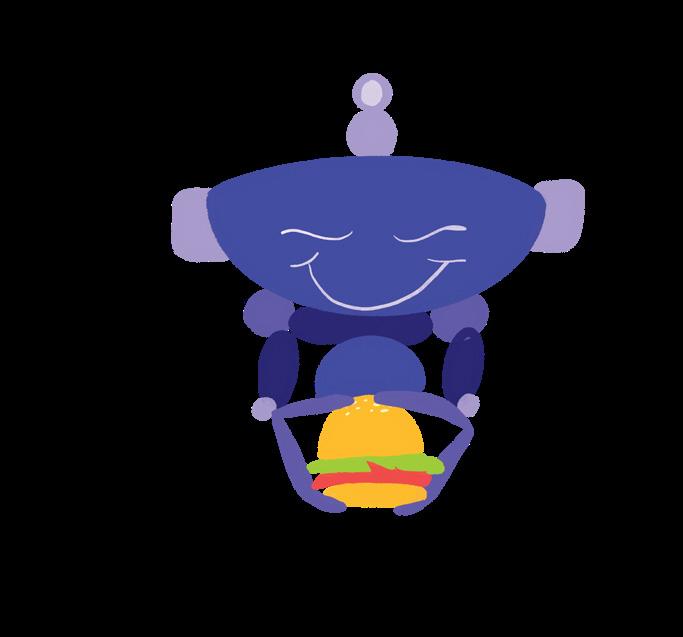



Miami’s record traffic during peak hours made getting from destination to destination treacherous. AI overlooked details like starting far north and traveling south to avoid traffic.
At the end of its response, ChatGPT said, “Remember to plan your day according to your interests and preferences. Miami has a diverse range of activities, so you can tailor your day to suit your tastes, whether you’re interested in art, culture, beach relaxation or nightlife.”
Roberta Macedo // Graphics Editor
// A&E (0ct0ber_4;2023) THE_MIAMI_HURRICANE
FEATURE
<AI_and_Hollywood: Who, or_what, will_prevail?/>
//BY SAMANTHA RODRIGUEZ CONTRIBUTING WRITER//
Entertainment industries constantly battle to create the next record-breaking blockbuster — while spending millions in the process. Such industries are using AI to decrease costs as the fight roars, putting actors and writ ers jobs at risk.
If time is money, then Hollywood is still broke. The COVID-19 pandemic made consumer interest exceed active production, making demand greater than supply.
The entertainment industry started its search for an effective way to reduce costs as spending millions on films has become the norm. The corporations chose
eliminate them? Enter artificial intelligence (AI).
Entertainment titans like the Warner Brothers and Netflix began financing films as the pandemic started to clear. Writers and actors alike breathed a sigh of relief as the traditionally-risky industry miraculously became one of America’s most stable due to streaming services. However,
have to battle the technology for credit and employment.
Marvel’s “WandaVision” miniseries entered controversy as its use of AI-generated background actors was revealed. Background actress Alexandria Rubalcaba recalled the instructions she received to create her digital replica.
“Have your hands out. Have your hands in. Look this way. Look that way. Let us see your scared face. Let us see your surprised face,” Rubalcaba said in an interview with NPR. “I fear that AI is eventually going to weed out background actors. They won’t have any use for us
Voices of deceased actors like Anthony Bourdain and Andy Warhol have been recreated for projects, sparking a debate over AI ethics.
The Writer’s Guild of America aims to prevent writings by AI from being considered “literary material” — the phrase used in contracts to define scripts a screenwriter produces.

The Alliance of Motion Pictures and Television Producers (AMPTP), the organization writers were striking against, confirmed that AI-generated writing material can’t receive credit, but this decision is a double-edged
Writers began asking the question: if any evidence of AI is found in a script, can it be considered literary material at all?
Some writers have begun using AI as a resource to gain inspiration and information. If AMPTP’s standards don’t change, writers are at risk of losing credit.
The Screen Actors Guild (SAG) exposed the AMPTP’s position on AI after the SAG strike was declared on July 13.
In a statement, SAG accused AMPTP of wanting to “scan a background performer’s image, pay them for half a day’s labor and then use an individual’s likeness for any purpose forever without their consent.”
Despite AMPTP claiming SAG’s statement is a “deliberate distortion,” tensions erupted and actors took to the picket lines to strike alongside writers.
“Let’s replace studio execs with AI!” and “I told ChatGPT to write a picket sign and it sucked” became common phrases on picket signs.
Entertainment titans produced numerous films of high acclaim, but they weren’t satisfied and sought AI for cheaper work. Despite success, the titans sacrificed their workers for more profit. Their self-inflicted fall began as greed consumed them whole.
The outcome of the Hollywood strike could set a precedent for how laborers are protected from AI or robotic replacements in the future.
“I think it’s a conversation now about the culture of big business, and how it treats everybody up and down the ladder in the name of profit,” said Fran Drescher, current president of the SAG.
AI will continue to learn as it becomes more capable of mimicking human activity. Though the WGA reached a deal with the AMPTP on Sep. 24, SAG continues its fight for actor protections.
“Though AI is a tool that can be utilized, it’ll never be as good or creative as people,” said Claire Meder, president of the Cinematic Arts Commission and a thirdyear student studying marine biology and environmental science. “Using AI overpaid writers just really comes off as cheap and diminishes writer’s hard work.”
{ARTS & ENTERTAINMENT} 10 THE_MIAMI_HURRICANE (0ct0ber_4;2023)
SCREEN
Roberta Macedo // Graphics Editor
<Will_AI_be_the_future_of_the_music_industry?/>
//BY ANNA HANONICK CONTRIBUTING WRITER//
Many have come across and laughed at the artifcial intelligence (AI) cover of Plankton from Spongebob singing “Shine Bright Like a Diamond” by Rihanna. But when TikTok user ghostwriter977 trained AI to duplicate and generate a new song that many were fooled to be by Drake and the Weekend, musicians and copyright defenders alike began to express concern over the potential takeover of AI in the music industry.



New AI technology has artifcially generated elements of music like vocals, lyrics and production. As AI becomes more advanced, music listeners wonder if machines will replace the authenticity and creativity of human artists.
AI infltrated the music industry long before many may realize. Applications like Shazam — which use AI to help people quickly identify a song they don’t recognize — have been around since 2002. AI has also changed the way music is promoted, spotting various patterns and trends in vast amounts of data that human advertisers often miss.
Will AI replace artists in the music industry?
AI has played a role in the music industry, but never a creative one. These concerns have led artists to question whether AI will eventually replace them.
Dr. Tom Collins, associate professor of music engineering technology at UM, has always been fascinated by how writing music can be duplicated by AI.
“If I say something like, write 16 measures of music in the style of Alicia Keys, if we’ve listened to a bit of her music, some of us
can do that. And so, I was fascinated in how we achieve that, discovering and utilizing certain patterns that might indicate that it is more Alicia Keys than Beethoven,” Collins said in an interview with News@theU.
Collins emphasizes that as AI advances, it will continue to revolutionize the music industry. Though AI may be growing at a seemingly fast pace, the algorithm is still not advanced enough to entirely replace a human being.
AI’s advanced algorithm makes its creations possible, but it only works with preexisting material found within its databases and patterns. Since creating original ideas and concepts is currently impossible for AI, it will take a long time before AI can replace human thinking patterns and cre-
ative processes.











Legal issues with AI-generated music
Attempts at legal regulation often follow advancing technology. In 2017, the emergence of deepfakes made many politicians fear that their next big political scandal could be fabricated. Deepfakes are a type of synthetic media that have been digitally manipulated to replace one person’s likeness convincingly with that of another, making it easy to spread misinformation and confusion.
This technology also threatens individuals in the music industry. The unregulated use of voice duplications may infringe on their copyrights, lower their earning potential or compromise their reputation.
The U.S. Copyright Offce stated that it will not register works produced by a machine or AI system, adding that copyright protection does not extend to non-human creators. Wrongful distribution of AI-generated music can lead to copyright infringement, unlawful impersonation or privacy infringement, all of which have serious legal repercussions.
In April 2023, legal issues led to the removal of TikTok user ghostwriter977’s AI-generated track “Heart on my Sleeve,” which featured Drake and The Weeknd despite their lack of involvement. The creator, however, did not face legal consequences.
This case is just one example of the legal policies surrounding AI and copyright laws that are still up for interpretation.
It’s about the artist
At the moment, the duplicative power of AI cannot replace the authenticity and originality consumers crave from the work of a human artist.
Although fans can digitally stream a song over 10,000 times, many are willing to pay excessive amounts to hear their favorite artist sing that exact song live. They are paying to see the artist perform that song, not just to hear it.
While AI-generated music threatens the authenticity of gifted individuals, current legal regulations protect musicians from competing with AI. Though it may be able to replicate great work, AI will never create the original, authentic work that an individual can.
//11 THE_MIAMI_HURRICANE (0ct0ber_4;2023) A&E MUSIC
Sophie Toledano // Staff Graphic Designer
<The_future_of_athletic_training_is_virtual/>
//BY CHRIS DAMOND SENIOR STAFF WRITER//
Sports are unpredictable, but virtual reality may soon prepare athletic trainers to face their jobs’ demands with more confidence.
A new initiative at the University of Miami seeks to enrich students’ learning environments with extended reality (XR) — an umbrella term that includes augmented, virtual and mixed realities — and that could change the game for aspiring athletic trainers by letting them learn in a realistic environment without consequences. Student and faculty grants are helping fund the University-wide initiative.
“We’re hoping to lead the way at the University of Miami,” Thomas Merrick, the assistant director of VR/AR initiatives, said. “There are a few schools that are already [using XR], but there’s very few that are doing a lot of this stuff.”
VR can be particularly useful for those in medical school by simulating surgical procedures, but Maggie Aldousany, the athletic training program director at UM, hopes it can become an essential part of the athletic training curriculum, too. For athletic trainers, who normally don’t have to perform surgery, VR is used a bit differently.
“The goal would be to bring virtual reality into athletic training to work on different patient interaction skills … get them better set up to flourish in their clinical settings,” Aldousany said.
VR also prepares athletic trainers for emergency scenarios, whether that be treating a
wound or using a spinal board to carry an injured athlete off the field.
“[You] make a mistake in a virtual world, we can get past it,” Merrick said.
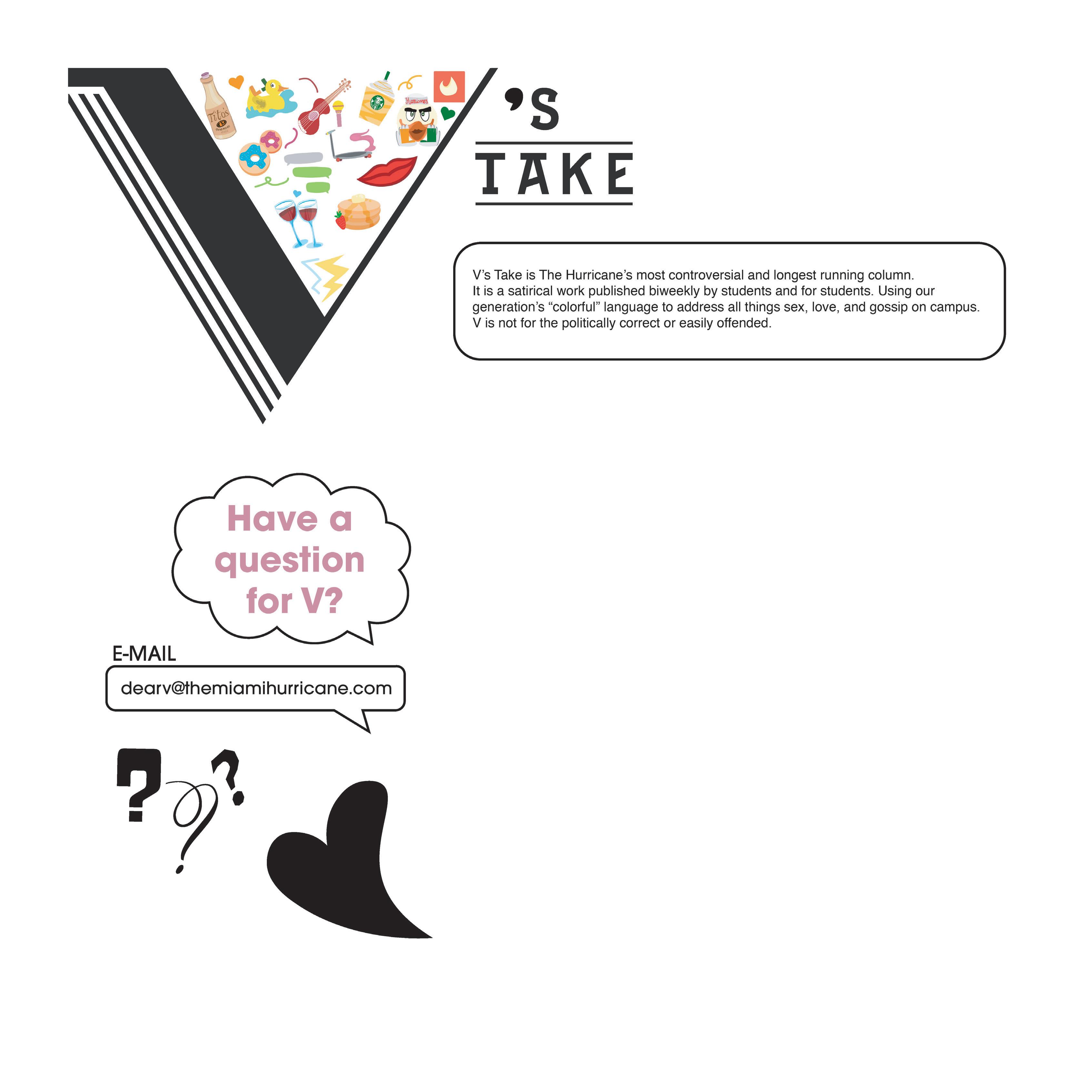
Dangerous scenarios like those, where the margin for error is slim, are just one aspect of the acronym DICE — which stands for dangerous, impossible, counterproductive and expensive. If a scenario falls into at least one of these categories, Merrick says using VR probably makes sense.
“We can bring people to Mars, move things on Mars [in VR]. That’s an impossible feat,” Merrick says. “From a microbiology perspective, I can bring you down to the cell level and you can pull cells apart. So this gives you an idea of all the different ways virtual reality can be helpful.”
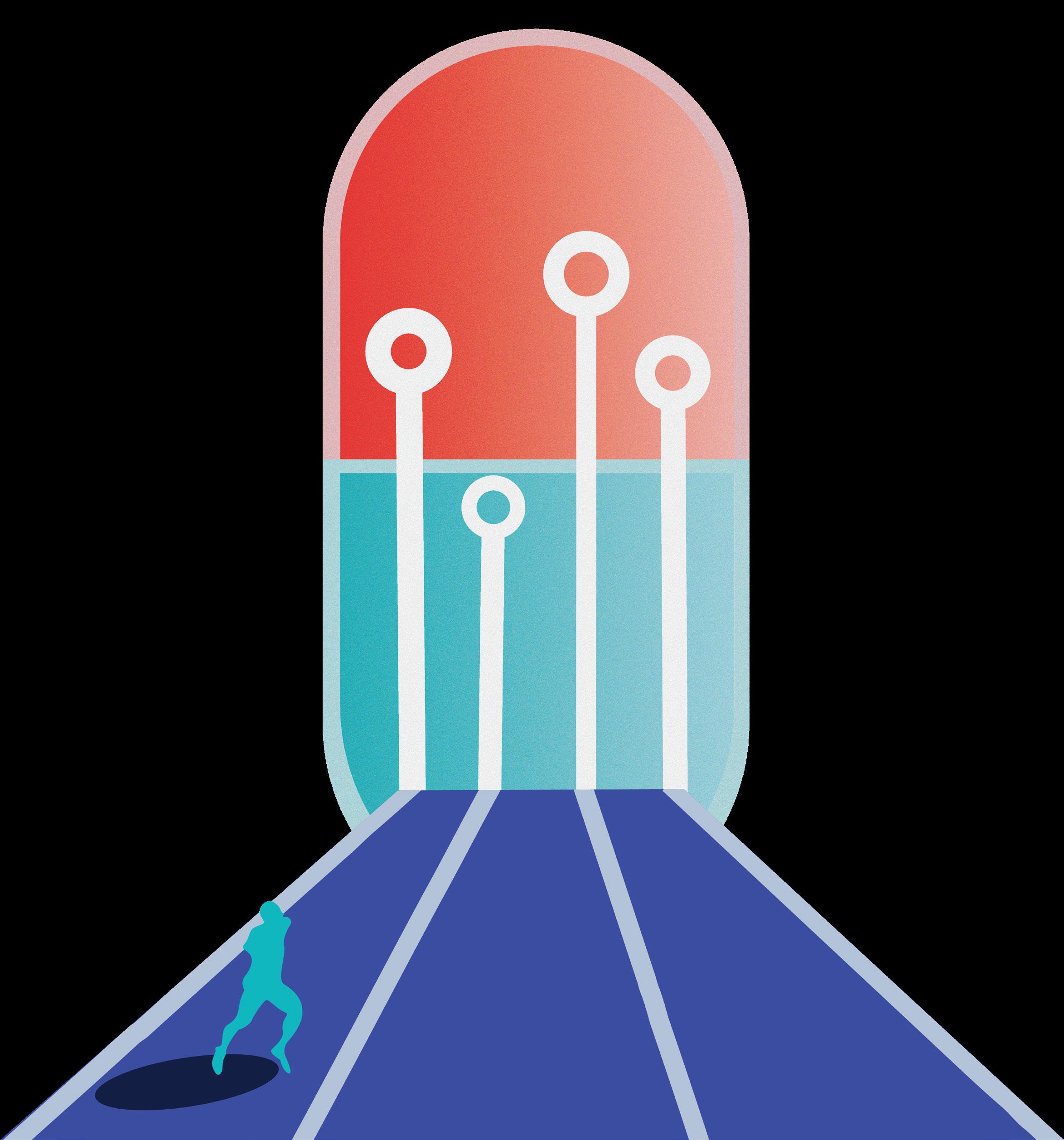
Some VR platforms allow athletic trainers to look at the human body in a new way, allowing them to observe bodily motions and move things around — an impossible task in the real world.
“What we can do is build them a system such that when you go into a
classroom, you can say, ‘Well, what’s going on with the rotator cuff,’ and walk into a body and and move certain things around and see aspects of what’s happening with the rotator cuff,” Merrick said.
The benefits of VR also extend to the athletes, who can better understand their own body in an immersive, virtual environment and educate themselves about important issues like concussions and landing mechanisms. Aldousany says athletes might become greater advocates for their health as a result.
“I think if athletes are educated on prevention of something like heat illness, concussions, landing mechanics … if they can actually go [use VR] and understand how different motions and different game preparation physically can aid them, then I think they have more buy-in to following protocols.”
VR is not that common in the sports world just yet. While other
universities are utilizing these new technologies, including Stanford which opened its Neurological and Virtual Reality Center in 2016, Merrick says the world is “at the knee of the curve.”
But because the technology isn’t user-friendly and cost effective, Aldousany says there is a “barrier” discouraging widespread use of VR in sports medicine.
“Clinicians already across all disciplines of sports medicine are strapped for time. And so, if you want them to implement a new technology, it needs to be one that’s digestible,” she said. According to Aldousany, this problem can be solved by making VR accessible on portable devices, like smartphones and tables. That, along with raising general awareness, will ultimately break down the barrier.
Merrick says that virtual reality is rapidly changing and will only become more user-friendly in the future. Not long ago, VR headsets were attached to computers, but now, all the processing happens directly within the headset.
The bottom line — as technology develops, VR will only become more common in the sports world, and that’s good news for athletic trainers and athletes alike.
“I feel like [VR] is going to empower athletes to have more of a role and an understanding in their healthcare plans,” Aldousany said. “And then I think for athletic training students, it’s going to give them opportunities that before were only mock simulated. This is a way that’s going to give them more real world experience to make them better clinicians.”
designer
{SPORTS} //12 THE_MIAMI_HURRICANE (0ct0ber_4;2023)
FEATURE
Sophie Toledano // Staff graphic
Even though there’s a lot to love about UM’s beautiful campus, Miami’s dating scene never fails to let me down. With sky-high numbers of airhead-infuencerwannabes and business school frat boys, fnding a long-term partner in Miami is harder than getting into LIV with a fake ID.
That is why, I propose a solution. With the advancements in AI, and ChatGPT saving many hungover students from a failing grade, could AI be your soulmate?
As a veteran member of the UM dating pool who has faced a substantial amount of disappointment, it looks like this fall I might be cozying up with my phone instead of a lover.
While staring at a screen looking at profle after profle of low-quality fshing photos and over-saturated
gym mirror selfes may be appealing to some, AI risks no threat of “the ick”.
After training your perfectly coded partner, auto-generated responses will sweep you off your feet much faster than any 5’2” “king” ever could. Long gone are your worries about awkwardly running into ex-hookups at the Grove on Thursday night. And, there will always be someone to compliment your Shein going-out top and a virtual hand to console your intoxicated self.
Perhaps the most alluring aspect of an AI Amour is the convenience. AI has no choice but to be at your beck and call. No more waiting for a read receipt or watching to see if his snap score is going up. Your automated lover will always respond instantly. Think How to Build a Better Boy or Her — until
it rips your heart out.
Let’s not forget the advantages dating AI can bring to our campus community. Imagine a world where you can avoid laying eyes on touch-deprived students swapping spit by the frat pool at 9 a.m. on game days or freshmen covered in sweat dry-humping on the Sandbar elevated surfaces. AI may have the power to rid our campus community of disgusting displays of public affection while still ensuring everyone gets some (albeit virtual) ass.
While AI offers many advantages to the disaster that is the UM dating pool, the question still remains — could AI ever replace the loving touch of a Frat Man?

<Hey_Alexa,_talk_dirty_to_me: An_argument_in_favor_of_AI_dating/>
UMPD responds after UM community outrage over cats’ deaths
BY CAROLINE VAL CO NEWS EDITOR
After a week of silence, the University of Miami Police Department (UMPD), responded to The Miami Hurricanes request for comment on the recent uptick of cat injuries and deaths on UM’s Coral Gables Campus.
The Hurricane requested comment about potential leads on perpetrator(s), why response to UPurr’s immediate requests for security footage to be reviewed was delayed to the point of footage being “automatically erased” and how UMPD plans to move forward in the animal cruelty investigation fled by UPurr.
“The University of Miami Police Department immediately assesses and investigates all reports it receives, including the incidents regarding the feral cats that were reported by members of the UPurr student organization,” said UMPD Chief David Rivero.
“No one has been ignored, and we continue to look into this matter utilizing all investigative means
possible. If an individual is found responsible, arrests will be made.”
When referring to the necropsy report made in relation to the death of “Father Cat,” a brown male cat found dead in the Allen Hall courtyard on July 31, Chief Rivero stated the following:
“The necropsy report that has been referenced determined one of the animals died from blunt force trauma and that the cause of the injury was inconclusive and ‘could include vehicular, human or animal induced trauma,’” said Rivero.
No further comment was provided on behalf of the police department.
The University also revealed the administration is working alongside UPurr on a new policy to mitigate the violent actions against its feral cat population on campus.
“The University of Miami has been working closely with UPurr members over the past year to develop a Campus Cat Policy and respond to any concerns regarding the cat population on campus,” UM Communications said in a statement.
“The policy was specifcally written with the input of the Department of Environmental Health Safety in the Division of Facilities, Operations and Planning to protect community cats, as well as the human population on campus, by defning procedures for community cat feeding and care.”
The delayed response from campus authorities regarding the situation has left the UM and greater Miami-Dade community confused and outraged.
“Does anyone know what is going on at the University of Miami regarding the cats around the law school and Miller entrance?” Susan Lacy said in a post within the public Facebook group Miami Beach Animal Advocates. “This week men with nets have been observed late at night trying to net the cats in that area.”
A user suggested that the suspected men were trapping ducks on behalf of the University to control the population.
According to a report from The Hurricane in 2016 in which it was
cited that UM had been removing Muscovy ducks from its property, UM Communications openly confrmed that a frm was hired to handle the “one-time removal” and that “no further action” was planned at the time.
One UPurr cat feeder, who requested to remain anonymous, discussed her recent interaction with the men referenced in the animal advocacy Facebook page.
“While waiting in the car near the law library, I was watching the cats in the parking lot,” the feeder said. “From a hallway came a man with a large net. Once he saw the cats he whistled for others to come for backup as he pointed to the cats. I feared these men were up to no good.”
When told by the men that they were trapping ducks, the cat feeder questioned them further.
“I asked him what he was doing with the ducks … He pointed to a service area and said they had a ‘place’ for them there. It seems they were possibly with a company, as they all had the same shirts on. And
the same exact net. They were defnitely agitated by my questioning.”
This speculated information has not been confrmed by The Hurricane nor further verifed.
Chief Assistant State Attorney Kathleen Hoague, the director of the state attorney’s animal cruelty unit, spoke to the prosecution process should a perpetrator be identifed.
“If these injuries and/or deaths have been intentionally inficted by a person or persons, that person or persons can and will be prosecuted to the full extent of the law for Felony Animal Cruelty if we can prove who he or she is,” said Hoague.
“These are very serious criminal charges and the persons who commit animal cruelty are dangerous persons to not only animals, but to other persons.”
As the investigation continues, students and UM community members alike are urging campus authorities to provide more insight as to how severe the safety threat is.
Continue reading at the Miami Hurricane.com
Timeline: An investigation into The Cloisters “cluster”
BY JENNY JACOBY & LAUREN FERRER EDITOR IN CHIEF & MANAGING EDITOR
Aug. 13
On Aug. 13 the would-be residents of The Cloisters Miami were notifed that their scheduled move-in was pushed back two weeks due to unforeseen delays. They were moved into local hotels, THesis Miami and the Biltmore, until their units were ready — or so they thought.
Aug. 17
Four days later, an email reminder was sent listing the provisions the Cloisters would offer for its residents during their hotel stays. Hotel costs
and parking were fully covered by the property, stipends for laundry and food costs were provided as well as a free shuttle to bus students to campus.
Aug. 27
The Cloisters’ apartment residents were told their units were further delayed another two weeks. On this day, the townhome residents, the other living facility option, were alerted that their scheduled move-in day was Sept. 2.
Sept. 19
Miami-Dade County’s Building
Offcial issued the Cloisters’ Temporary Certifcate of Occupancy (TCO) on Friday, Sept. 19, based on
the inspection approval and recommendations provided by Universal Engineering Sciences, the private provider for inspections hired by Landmark Properties, that recommended the TCO be issued and to allow occupancy.
Sept. 22
On Friday, the apartment residents moved out of hotels and into their units at 5830 SW 57th Ave. They were given less than one day’s notice to relocate all of their property to their new units.
Sept. 22-Sept. 26
Over the next few days, residents experienced inconvenient disruptions including dirty units, sewage
issues, foul-tasting water, no internet connection, incomplete electrical wiring and broken air conditioning.
Sept. 26
On Tuesday morning, and based on the complaints received, MiamiDade County building inspectors of all trades were on site to meet with the private provider and contractor to inspect the complaints and current on-site conditions.
The Miami-Dade Water and Sewer Department also sent inspectors to collect water samples of the water provided by the city to the Cloisters residence. The results of these tests showed the water was clean of contaminants and safe to drink.
Sept. 27
Following the County’s inspections, the Cloisters called the residents of four units, giving them less than a day’s notice to vacate the units. After three hours of incoherent communication, the residents were notifed they would be moving back into hotel rooms until Oct. 4. Some of those impacted negotiated until the Cloisters’ agreed to cover AirBNB accommodations after struggling in hotels with no access to kitchens and other utilities the previous month. The AirBNBs are being paid for by the residents with the understanding that the Cloisters will later reimburse them for those costs. Read what’s happening now at the Miami Hurricane.com
{IN 0THER NEWS} //14 THE_MIAMI_HURRICANE (0ct0ber_4;2023) NEWS
Miami women’s basketball: 2023-24 schedule breakdown
BY LUKE SIMS STAFF WRITER
The ACC released its women’s basketball schedules on Tuesday, Sept. 26. Miami women’s basketball team will retake the court on Nov. 9.
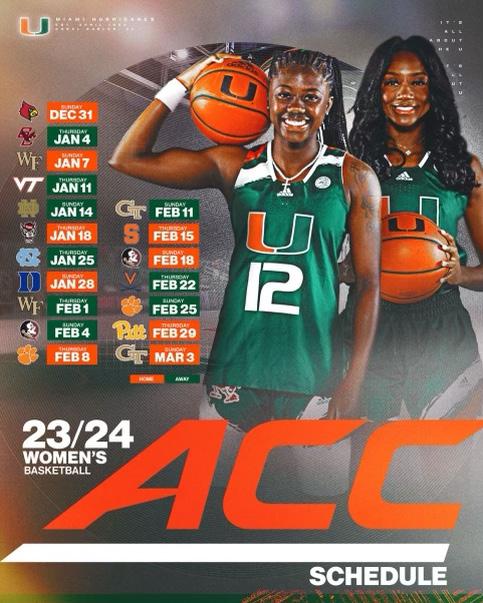
Before conference play begins, the Hurricanes’ season kicks off against Jacksonville. That is the frst of fve games at the Watsco Center before Miami head on the road to take on the Mississippi State Bulldogs in the inaugural ACC/SEC challenge.
The ACC schedule begins on New Year’s Eve with a matchup against the Louisville Cardinals, a team that played in the Final Four last year. This will be the frst time Miami opens ACC play versus Louisville in program history. The ‘Canes will get 11 games before that to tune up for their demanding conference schedule.
Miami will spend equal time on the road and in front of the fans at the Watsco Center. The ‘Canes will play nine ACC games at home and nine on the road during the 202324 season.
During the conference schedule, the Hurricanes will have to face seven NCAA Tournament teams from last season. This includes games against Virginia Tech and Louisville, who both made the Elite Eight of the NCAA tourna-
ment in 2023. During ACC play, Miami gets to battle with Wake Forest, Clemson, Georgia Tech and Florida State twice.
The frst two weeks of ACC play are a brutal stretch of games for the ‘Canes, as they play Virginia Tech, Louisville and Notre Dame. The Fighting Irish fnished frst this past ACC regular season. Head coach Katie Meier and the ‘Canes will learn a lot about their team during this diffcult stretch.
The Hurricanes then play backto-back games against college basketball blue-bloods in North Carolina and Duke to close out the month of January. Duke was one of the top teams in the ACC last season. North Carolina also fnished ahead of Miami in the standings. This will be a pair of diffcult matchups for UM.
February starts with two road games. One to Winston-Salem to battle Wake Forest and then to Tallahassee to face the Florida State Seminoles. The ‘Canes then return home to face Clemson for the frst time before going to Atlanta to play Georgia Tech for one of their two face-offs with the Yellow Jackets.
Right after Valentine’s Day, the ‘Canes get two games at home with Syracuse and the last matchup against Florida State. After the short homestand, it’s two more road games with Virginia and the
second Clemson matchup on the docket.
To close the season, the ‘Canes welcome Pittsburgh and Georgia Tech to Coral Gables for their last two games. The regular season and ACC play are set to wrap up on March 3.
Last season, the ‘Canes went to the Elite Eight and fnished 18th in the USA Today/WBCA Coaches Poll. It was the most successful season in Miami women’s basketball history. Repeating that with the team’s losses from graduation and the WNBA draft will be a tall task. The team lost its fearless leader, Destiny Harden, as well the Cavinder twins, Haley and Hanna. Miami’s center and block leader, Lola Pendande, has used all of her eligibility
Miami utilized the transfer portal to add some talent to the current roster. UM acquired several guard transfers in Jaida Patrick, Shayeann Day-Wilson, Ally Stedman and Lemyah Hylton. Patrick and Stedman put up 12.5 and 15.6 points per game last season and their previous schools and look to take commanding roles in the offense alongside returning guards Ja’Leah Williams and Jasmyne Roberts. Internally, Kyla Oldacre should do a great job flling the shoes left by Pendande’s absence. While lots of talent and experience
were lost, there’s no lack of it gearing up to replace it.
The ‘Canes have some tough stretches in the schedule this year.
The opening weeks of ACC play and the back-to-back contests against Duke and North Carolina
should be tough. The ‘Canes have to play Florida State, a solid team, twice. This will be a new-look Miami team for Meier, but after last season’s success, this squad has proved they shouldn’t be underestimated.
Florida State wins rivalry game against Miami soccer
BY QUINN SHEEHAN STAFF WRITER
The Miami Hurricanes’ soccer team had a diffcult task at hand on Friday night and weren’t able to rise to the occasion. The ‘Canes traveled to Tallahassee, Florida, to take on the No. 2 ranked Florida State Seminoles. While they battled hard, the Seminoles defeated the Hurricanes by a score of 2-0.
“The real challenge was coming into the weekend against one of the top teams in the country with some injured players that forced us to change our lineup. It’s hard to do with only two training days, but I thought we executed the game plan quite well,” Miami head coach Sarah Barnes said. “Our attention to detail and the effort was extreme. Two mistakes against a really outstand-
ing attacker was the difference in the game.”
Seminoles star freshman Jordynn Dudley notched both goals for FSU while the Seminoles’ defense didn’t allow a shot on the net for Miami in their victory. The two goals brought Dudley’s season tally up to seven, the second most of any player in the entire ACC.
On Miami’s side, Hurricanes’
goalkeeper Melissa Dagenais had nine saves in the hard-fought loss. Miami (3-5, 2-2 ACC) came into the match with its best start to conference play in seven years. The ‘Canes looked to utilize this momentum to upset the No. 2 team in the nation, and an upset seemed possible for almost the frst 60 minutes.
However, at the 59:03 mark, Dudley broke the scoreless tie. She added
her second score of the match in the 87th minute to maintain Florida State’s undefeated record.
The Hurricanes will now face another formidable conference opponent on Thursday when they travel to Chapel Hill, North Carolina, to play the No.1 ranked team in the country, the North Carolina Tar Heels. Kickoff for Thursday’s match is set for 7 p.m.
//15 THE_MIAMI_HURRICANE (0ct0ber_4;2023)
SPORTS
Miami Athletics // Contributed Graphic

{ADVERTISEMENT} //16 THE_MIAMI_HURRICANE (0ct0ber_4;2023)




























































 Jenny Jacoby // Editor-in-Chief, Lauren Ferrer // Managing Editor, Cecelia Runner // Photo Editor
Jenny Jacoby // Editor-in-Chief, Lauren Ferrer // Managing Editor, Cecelia Runner // Photo Editor



 “One thing I love about AI in what I do is that I have the opportunity to help so many people in need”
Joey Shulz
PhD student in molecular cell and developmental biology
“One thing I love about AI in what I do is that I have the opportunity to help so many people in need”
Joey Shulz
PhD student in molecular cell and developmental biology



























